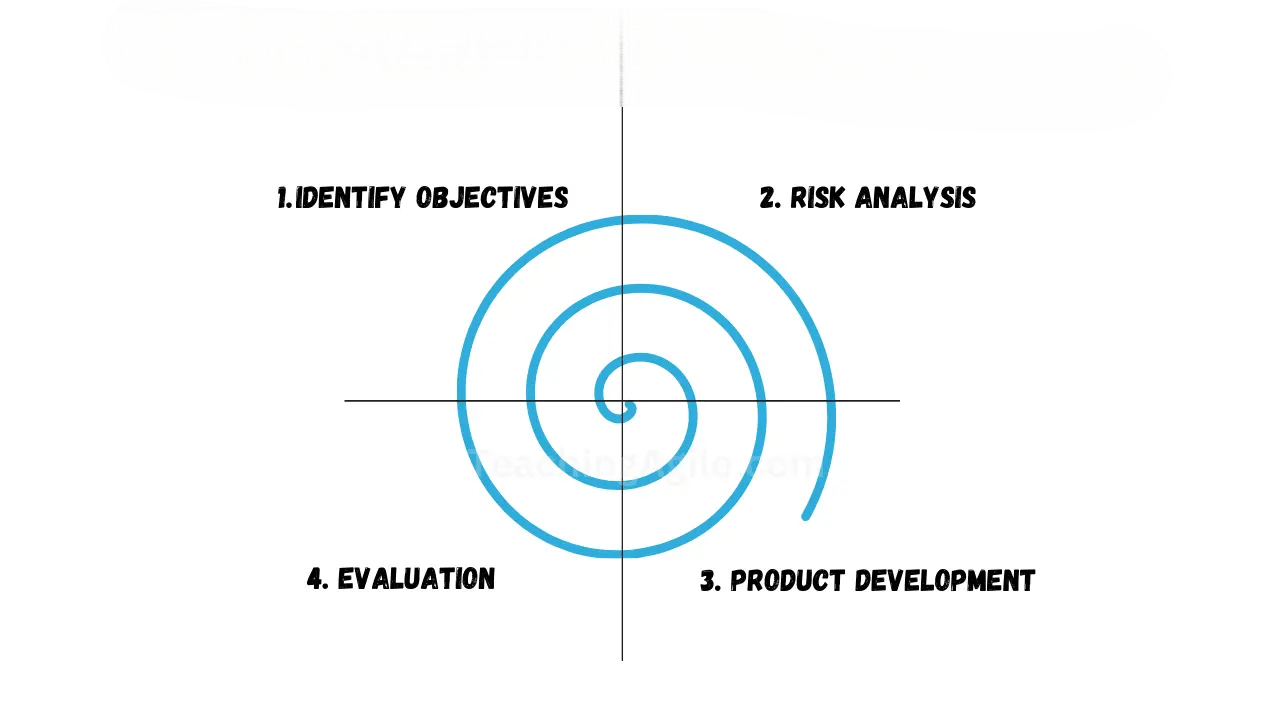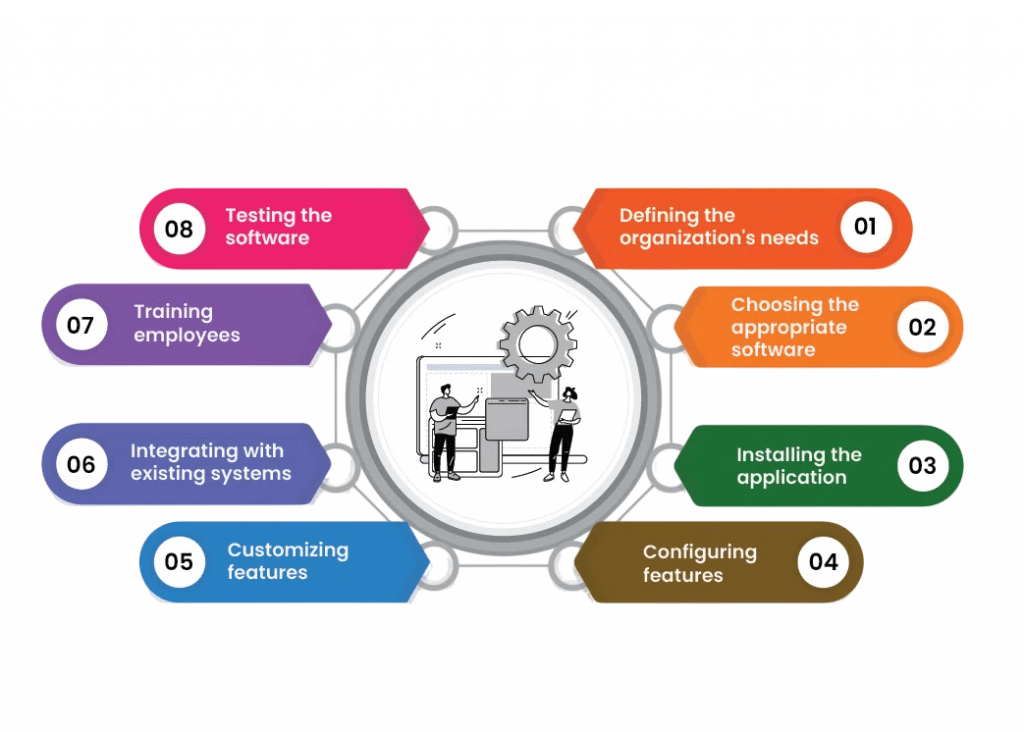
- Introduction to Spiral Model
- Phases of Spiral Model
- Risk Assessment Techniques
- Planning and Requirement Analysis
- Design and Prototyping
- Implementation and Testing
- Iteration in the Spiral Model
- Spiral vs. Waterfall/Agile
- Applications of Spiral Model
- Benefits and Drawbacks
- Real-World Examples
- When to Use Sprial Model
- Conclusion
Introduction to Spiral Model
The Spiral Model is a software development process model that combines elements of both design and prototyping in stages to combine advantages of top-down and bottom-up concepts. It was first defined by Barry Boehm in 1986 as a risk-driven process model.The Spiral method is a software development life cycle methodology that focuses on risk management waterfall that incorporates incremental and iterative development. It is characterized by repeated iteration across multiple phases, validation such as planning, risk analysis, engineering, and evaluation, which allow for continuous risk assessment and mitigation. Unlike traditional linear models like Waterfall, the Spiral Model is iterative, allowing repeated refinement of the system through repeated cycles or “spirals.” Each spiral passes through four key phases: planning, risk analysis, engineering, and evaluation. This structure enables the development team to progressively build a system while managing risks effectively.The Spiral Model is particularly suited for large, complex, and high-risk projects, where requirements may be unclear or evolve over time.
Are You Interested in Learning More About Web Developer Certification? Sign Up For Our Web Developer Certification Courses Today!
Phases of Spiral Model
The Spiral Model organizes the software development life cycle SDLC process into iterative cycles, each consisting of four main phases. Each phase builds upon the results of the previous, spiraling toward a final product.
-
Phase 1: Planning
- Identify objectives, alternatives, and constraints.
- Collect initial requirements.
- Define project goals for this iteration.
- Develop a plan for the next phases. Phase 2: Risk Analysis
- Identify potential risks (technical, financial, schedule).
- Analyze risks and develop mitigation strategies.
- Decide on whether to proceed based on risk assessments.
- Perform prototyping or simulations if needed. Phase 3: Engineering (Development and Testing)
- Design, develop, and implement the software or a prototype.
- Carry out unit testing, integration testing, and validation.
- Build necessary documentation and deliverables. Phase 4: Evaluation (Customer Evaluation)
- Conduct user/customer evaluation of the current product.
- Gather feedback on the functionality and performance.
- Decide on refinements, changes, or project continuation.
- Plan the next spiral cycle based on feedback.

- Length Flexibility: The length of an identifier in Java is not restricted. However, it is recommended to use meaningful names to improve code readability and understanding.
- Unicode Support: Java allows the use of Unicode characters in identifiers, enabling code to be written in languages other than English or incorporating special characters.
- Best Practices: It’s essential to use descriptive and meaningful names for identifiers, such as totalAmount instead of just a, to enhance the clarity and maintainability of the code.
- Technical risks: feasibility, technology maturity, integration issues.
- Project management risks: schedule, budget overruns, resource availability.
- Business risks: changing market demands, regulatory compliance ,ROI uncertainty
- External risks: third-party dependencies, vendor issues. Risk Identification Methods
- Brainstorming sessions.
- Expert interviews.
- Prototyping and proof-of-concept development.
- Historical data analysis from previous projects. Risk Analysis and Mitigation
- Use risk matrices to evaluate probability vs impact.
- Prioritize risks based on severity.
- Develop contingency plans.
- Invest time in building prototypes to reduce technical uncertainty.
- Regularly update the risk register. By continuously revisiting risks at each spiral iteration, the model ensures proactive problem solving.
- Initial requirements are gathered broadly, focusing on high-level business goals.
- At each iteration, detailed requirements are refined based on previous feedback and risk outcomes.
- Planning includes setting goals, defining deliverables, and allocating resources for the iteration.
- Feasibility studies and cost-benefit analysis are conducted early to confirm project viability. Prototyping is a key advantage because it allows risk mitigation through early visualization and testing of concepts.
- Early spirals focus on conceptual designs and prototypes to validate assumptions and reduce technical risks.
- Prototypes can be throwaway (discarded after use) or evolutionary (built upon in subsequent spirals).
- Prototyping helps clarify ambiguous requirements and improve stakeholder communication.
- As the project progresses, designs become more detailed and comprehensive.
- Emphasizes iterative refinement of architecture, user interfaces, and component interactions. Prototyping is a key advantage because it allows risk mitigation through early visualization and testing of concepts.
- Unit testing to check individual modules.
- Integration testing to ensure components work together.
- System testing to validate the complete system.
- Acceptance testing with the customer to verify requirements.
- Cyclic and incremental, with each loop increasing system maturity.
- Enables continuous stakeholder involvement and feedback.
- Accommodates requirement changes and refinement.
- Focuses on risk-driven decision making for whether and how to proceed.
- Waterfall is linear and sequential: requirements → design → implementation → testing → maintenance.
- Spiral is iterative and risk-driven with cycles allowing risk assessment and requirement refinement.
- Waterfall suits projects with well-understood and fixed requirements.
- Spiral suits complex, high-risk projects with evolving requirements. Spiral vs Agile
- Both Spiral and Agile support iterative development and incremental delivery.
- A emphasizes collaboration, adaptability, and frequent releases, often with short sprints.
- Spiral emphasizes risk assessment and formal documentation at each iteration.
- A is more flexible in handling changes quickly; Spiral is more formal and structured.
- Spiral is favored in projects where risk management is critical; it suits fast-paced, customer-focused environments.Spiral is iterative and risk-driven with cycles allowing risk assessment and requirement refinement.
- Large-scale, complex systems like aerospace, defense, and telecommunications.
- Projects with high technical risk or uncertainty.
- Systems where requirements are not well understood initially.
- Mission-critical applications where failure is costly.
- Projects requiring frequent customer involvement.
- Software with evolving requirements and where prototypes are valuable.
- Embedded systems, real-time systems, and distributed systems development.
- Risk management: Focuses on early risk detection and mitigation.
- Customer involvement: Regular reviews and feedback improve satisfaction.
- Flexibility: Accommodates requirement changes and iterative refinements.
- Improved quality: Early prototyping and testing improve defect detection.
- Better planning: Each iteration is carefully planned, reducing surprises.
- Scalability: Suitable for large, complex projects. Drawbacks
- Complexity: Managing multiple iterations and risk analysis can be cumbersome.
- Cost: More expensive due to continuous planning, prototyping, and risk assessment.
- Time-consuming: Iterative nature can extend timelines if not managed well.
- Requires expertise: Teams must be skilled in risk management and iterative development.
- Not suitable for small/simple projects: Overhead may outweigh benefits.
- Project risks are high: Technical uncertainty, tight schedules, or budget concerns. A spiral model is applied to projects of a large size.
- Requirements are unclear or volatile: When initial requirements may evolve. A spiral technique is applied when frequent releases are needed.The appropriate time for creating a prototype
- Prototyping is necessary: To explore options or clarify requirements. The SDLC spiral model is appropriate for difficult and vague requirements.
- Customer involvement is needed: Frequent feedback helps guide development. The spiral approach is well suited to moderately to highly risky projects.
- Large, complex projects: Where formal risk management and documentation are needed. when economic considerations change to make it unwise to undertake a long-term project.
- Safety-critical or mission-critical software: Where defects are unacceptable. The SDLC spiral model is appropriate for difficult and vague requirements.
Risk Assessment Techniques
Risk management is the heart of the Phases of Spiral Model. Early and continuous risk identification and mitigation reduce surprises and improve project success.
Common Risk TypesExcited to Obtaining Your web developer Certificate? View The web developer course Offered By ACTE Right Now!
Planning and Requirement Analysis
Planning in the Spiral Model is incremental and adaptive.
Design and Prototyping
Design in the Spiral Model is incremental and evolves as more is learned about the system.
Interested in Pursuing web developer certification Program? Enroll For Web developer course Today!
Implementation and Testing
During each spiral iteration, the engineering phase involves: Conducting various levels of testing:

Iteration in the Spiral Model
Each loop of the spiral represents an iteration of the software development life cycle SDLC process, allowing gradual evolution from a concept to a full-fledged system.
-
Characteristics of Iterations:
Spiral vs Waterfall/Agile
Spiral vs WaterfallApplications of Spiral Model
The Spiral Model is particularly suited for:
Benefits and Drawbacks
-
Benefits
Real-World Examples
NASA Space Shuttle SoftwareThe NASA Space Shuttle software development life cycle SDLC leveraged iterative risk management principles similar to the Spiral Model to ensure reliability and safety in a highly complex system.
Large Financial SystemsBanks and financial institutions use the Spiral Model for large software systems where regulatory requirements and risk are paramount, and requirements may change during development.
Defense and Aerospace ProjectsThese sectors handle mission-critical systems with high risk, complexity, and evolving requirements, making the Spiral Model ideal.
Telecommunication SystemsTelecom projects require extensive prototyping and risk assessment due to integration challenges and performance demands.
When to Use Spiral Model
The Spiral Model is most appropriate when:
Conclusion
The Spiral Model offers a flexible and risk-aware approach to software development that bridges the gap between traditional plan-driven and iterative models. By emphasizing risk assessment and iterative refinement, it allows teams to manage uncertainty, incorporate customer feedback, and incrementally build complex systems.For projects in software development when risk management has the highest priority, phase of Spiral Model is a reliable choice. waterfall Spiral Model generates high-quality software by promoting risk detection, iterative development, and continuous client feedback. A spiral model is employed in software engineering for big projects validation. While it requires more management overhead and is best suited for large and high-risk projects, its benefits in reducing failures and adapting to change are well recognized. Understanding the Spiral Model equips software engineers and project managers with a powerful tool to handle challenging projects effectively.

